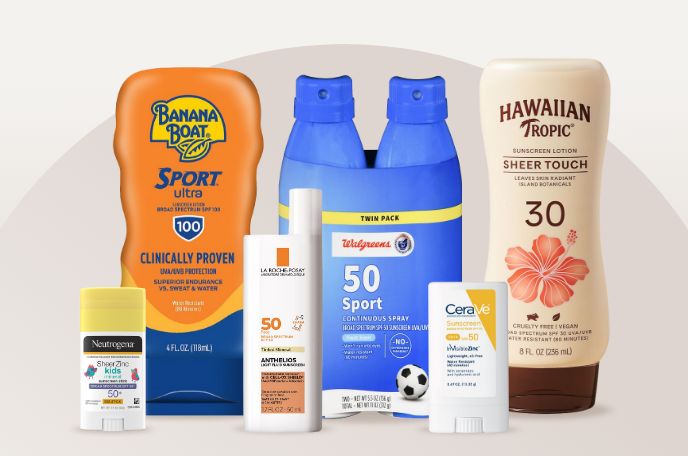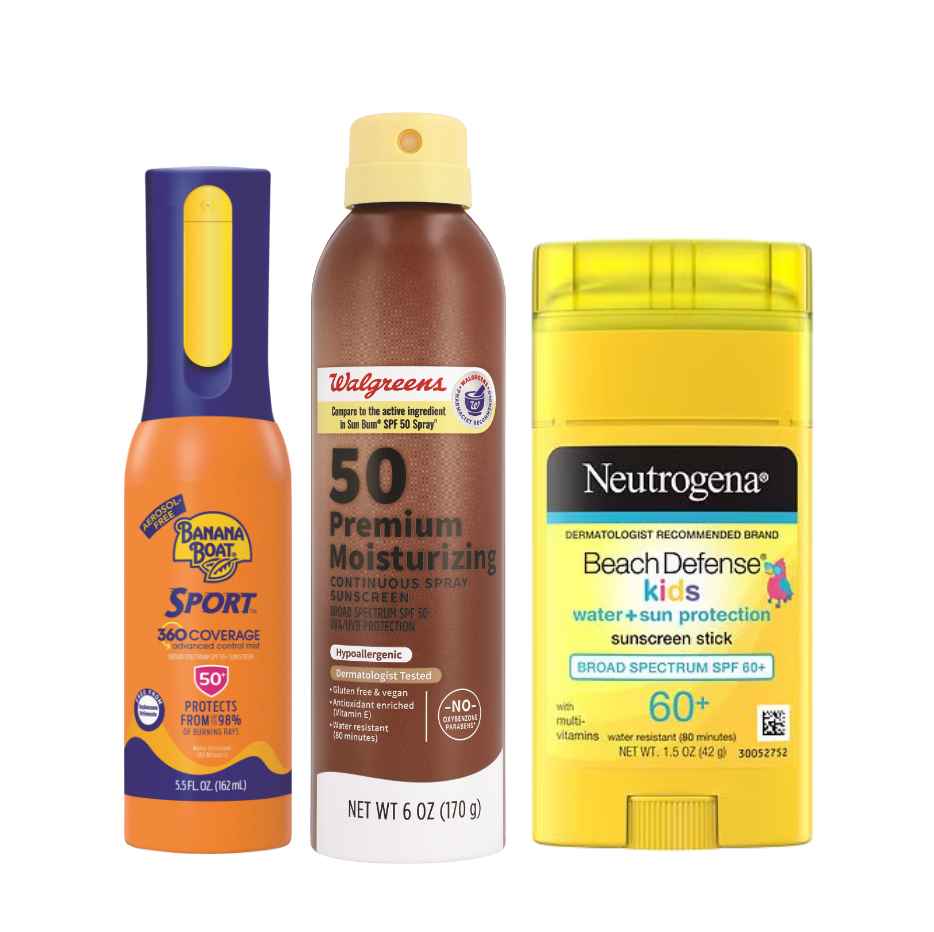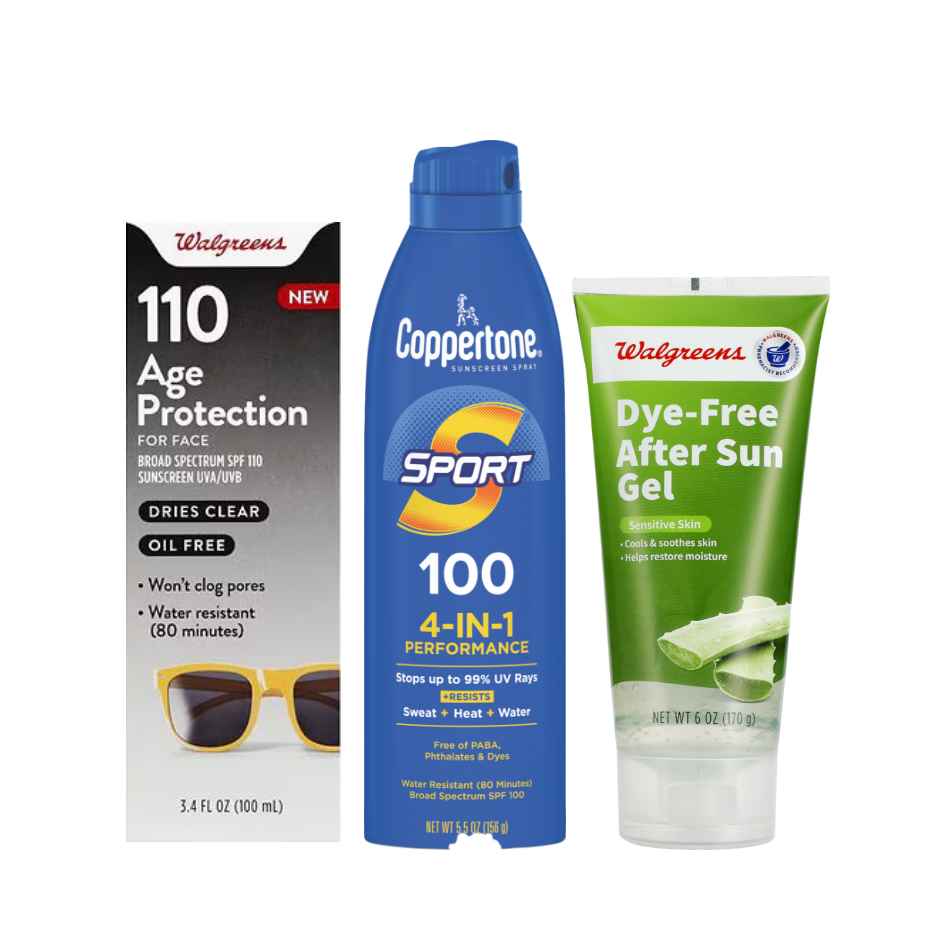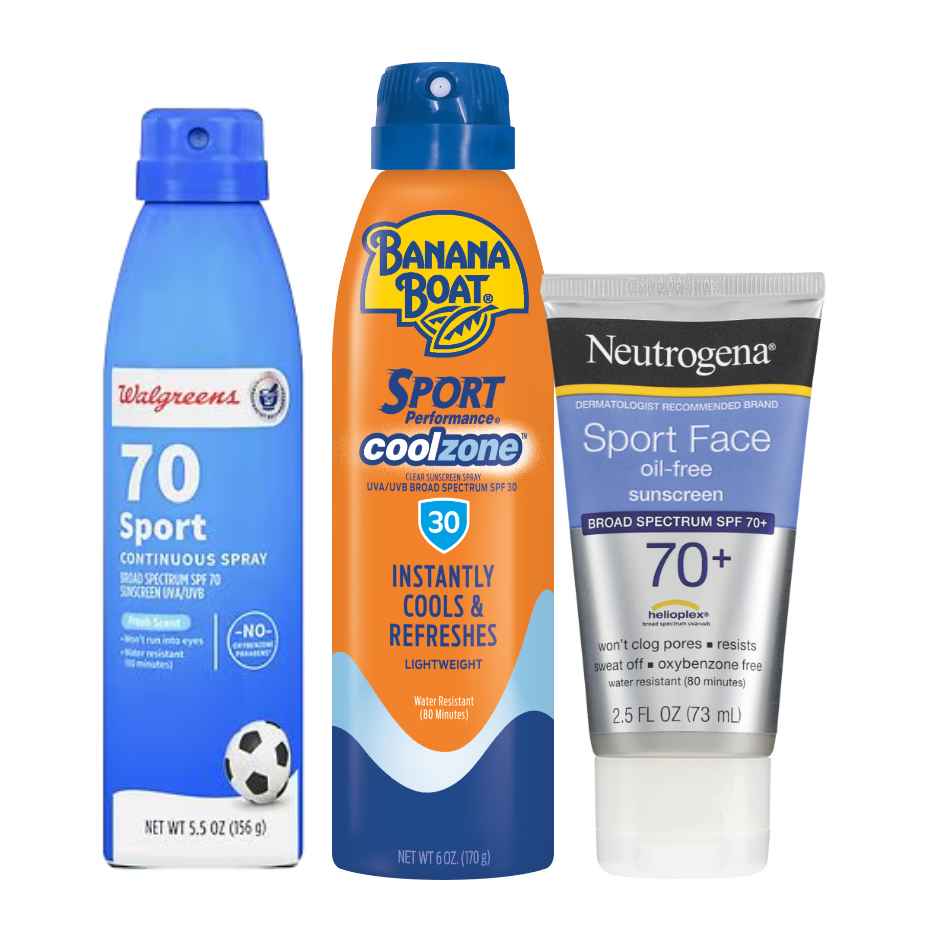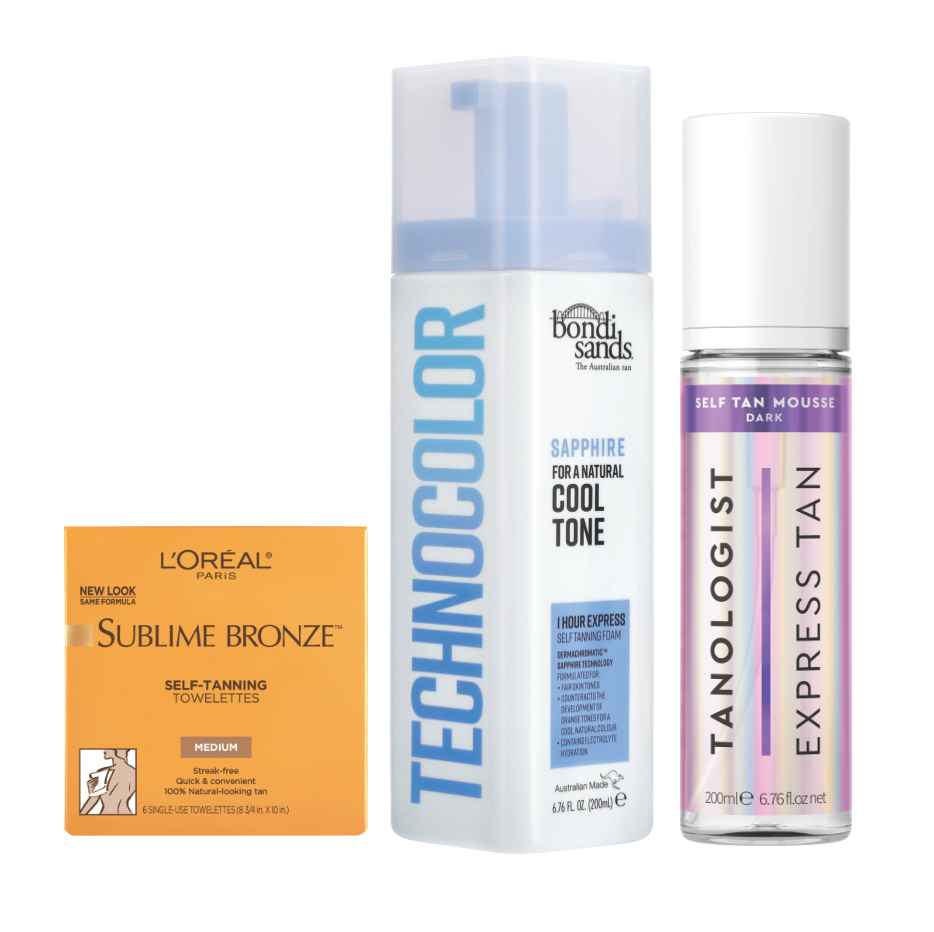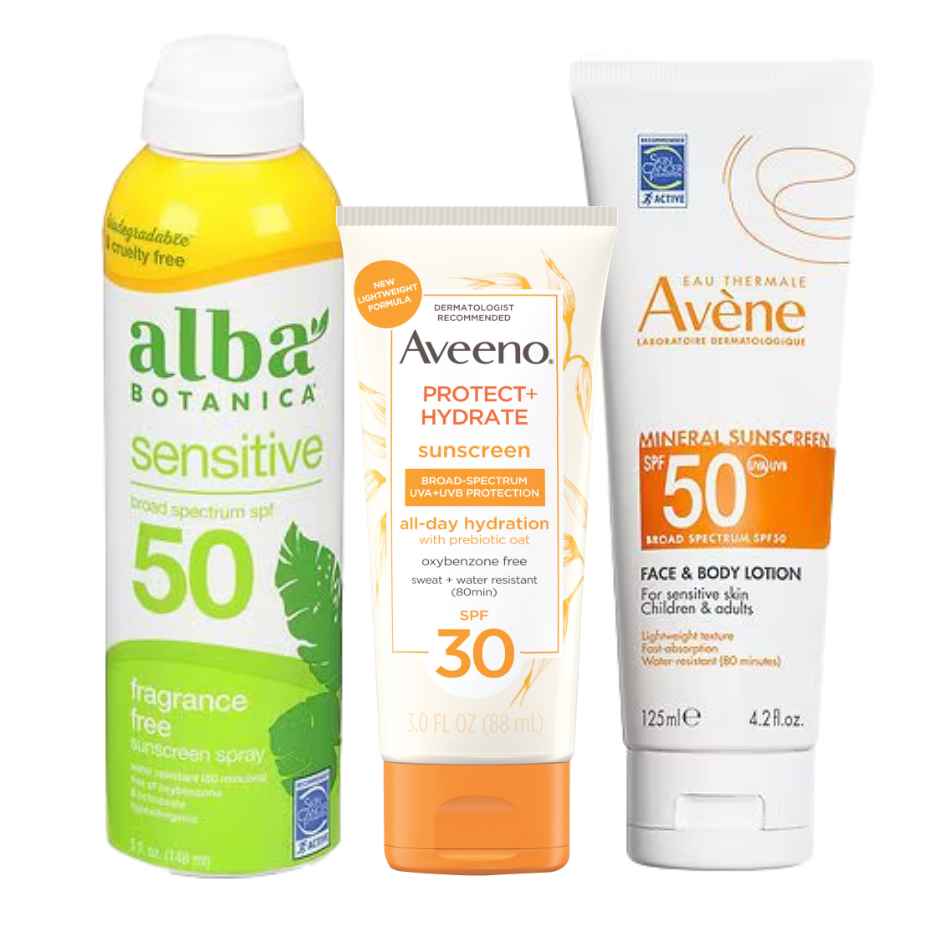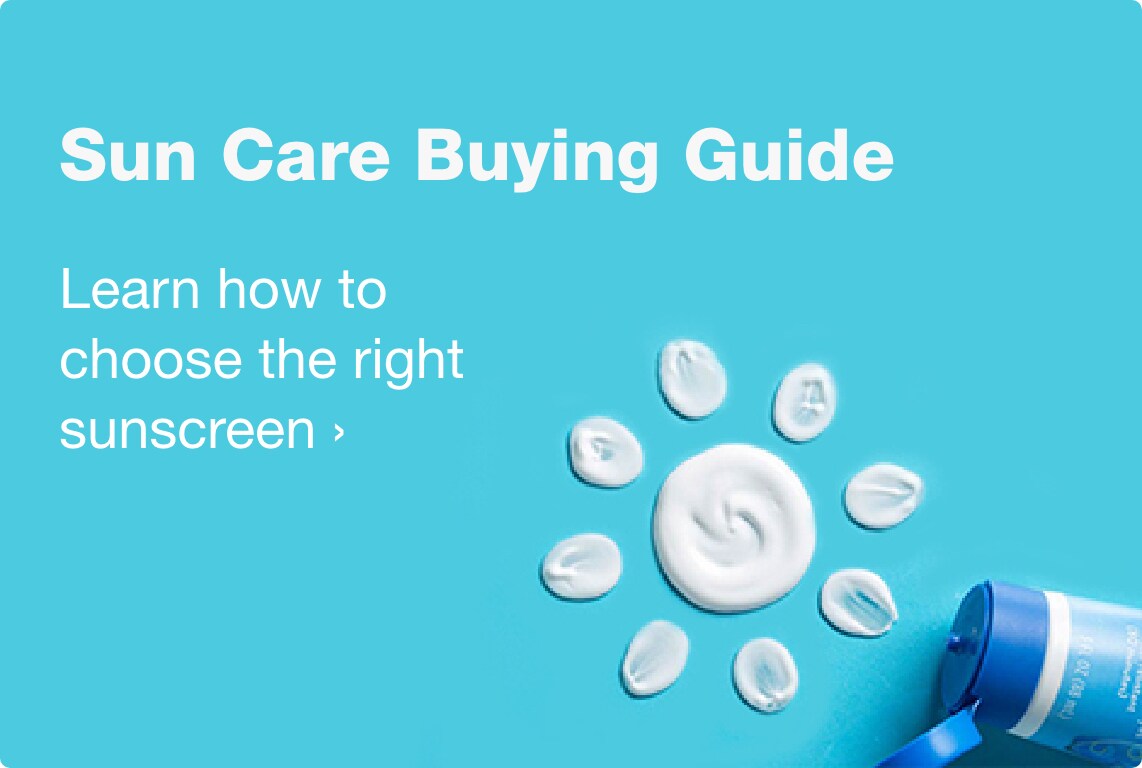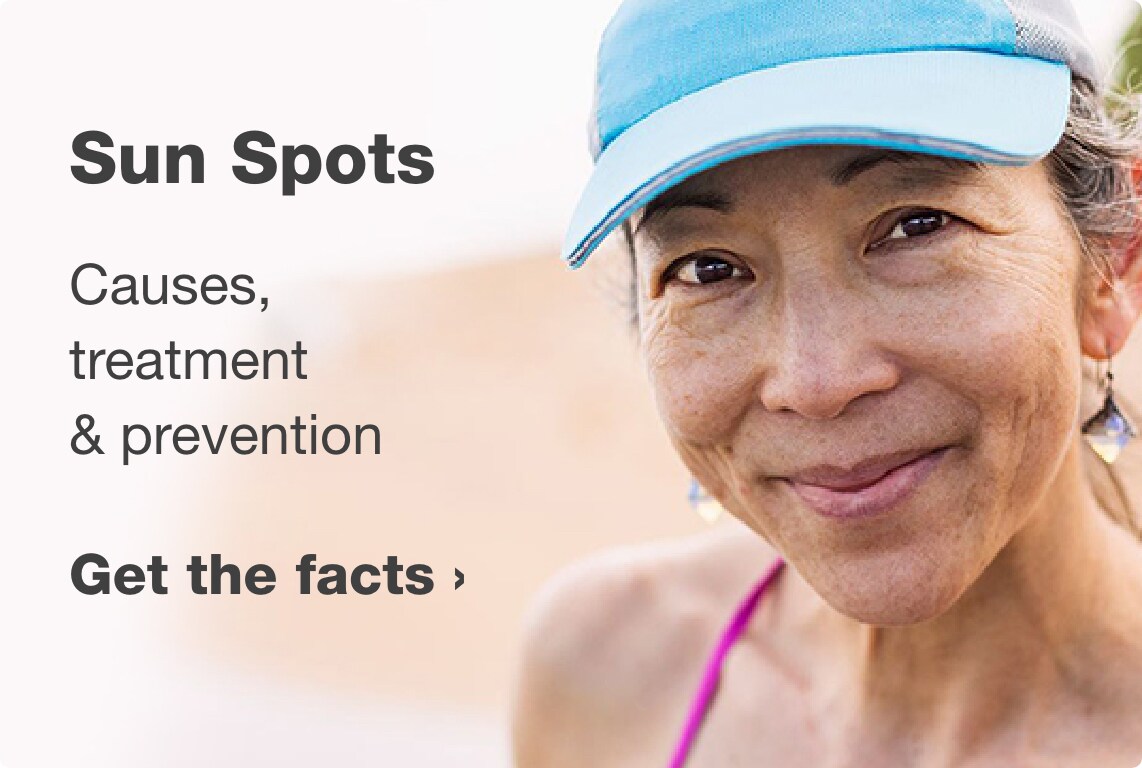Sun Care Products
What type of sunscreen
should I use?
-
- I'm shopping for the whole family
Here's what you should look for in a sunscreen to help protect the whole family:
- SPF (sun protection factor) of 30 or higher to protect against the sun's harmful UVB (ultraviolet B) rays. The higher the SPF, the more UVB the sunscreen filters out.
- "Broad spectrum" to protect against both UVA an UVB rays. Too much exposure to either can damage skin.
- "Water-resistant" or "sweat-resistant," which means it can briefly work on wet or sweaty skin. Still, you should reapply every two hours or after swimming, sweating or drying off.
- Spray sunscreens, which may be easier to apply to squirmy children. Never apply spray sunscreen directly to the face. Spray it on your hands first and then use your fingers to apply it.
- I burn easily
In addition to wearing a wide-brimmed hat and lightweight clothing that fully covers arms and legs, look for these products to help protect your skin:
- SPF (sun protection factor) of 30 or higher to protect against the sun's harmful UVB (ultraviolet B) rays. The higher the SPF, the more UVB the sunscreen filters out.
- "Broad spectrum" to protect against both UVA an UVB rays. Too much exposure to either can damage skin.
- Sunburn treatment products, just in case. If you don't have blisters, a moisturizing cream with aloe vera and soy can help soothe, and hydrocortisone cream can help reduce skin inflammation while it heals. Seek medical attention if your burn is severe or blistering.
- I'm active outdoors
No matter what activities you're up to this summer, it's important you protect your skin from the sun's harmful rays. You should also wear sunscreen on cloudy days, as UV rays can still reach your skin through clouds.
Here's what you should look for in a sunscreen
- "Water-resistant" or "sweat-resistant," which means it can briefly work on wet or sweaty skin. Still, you should reapply after every two hours or swimming, sweating or drying off.
- SPF (sun protection factor) of 30 or higher to protect against the sun's harmful UVB (ultraviolet B) rays. The higher the SPF, the more UVB the sunscreen filters out.
- "Broad spectrum" to protect against both UVA an UVB rays. Too much exposure to either can damage skin.
- I'm shopping for the whole family
-
- I want a sun-kissed glow
Getting a tan from the sun is a sign of skin damage and exposure to UV radiation. To get a warm glow without harming your skin, look for sunless tanning lotions and sprays, and wear sunscreen SPF 30+ while you're outdoors.
- I want something more natural or organic
Some people turn to organic sunscreen or biodegradable sunscreen for a more natural option. If you go this route, make sure you read labels closely and look for FDA-approved ingredients.
Here's what you should look for in a sunscreen:
- "Water-resistant" or "sweat-resistant," which means it can briefly work on wet or sweaty skin. Still, you should reapply after every two hours or swimming, sweating or drying off.
- SPF (sun protection factor) of 30 or higher to protect against the sun's harmful UVB (ultraviolet B) rays. The higher the SPF, the more UVB the sunscreen filters out.
- "Broad spectrum" to protect against both UVA an UVB rays. Too much exposure to either can damage skin.
- I want a sun-kissed glow


Is your sunscreen expert approved?
Look for the Skin Cancer Foundation's Seal of Recommendation, which means it meets the Foundation's standard for safe and effective sun protection products.
* Restrictions apply. See walgreens.com/offerdetails for more information.
